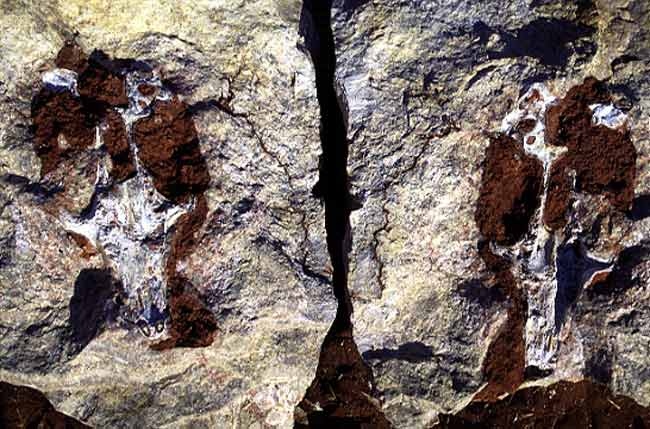Fossil Bones Suggest Ancient Marsupials Plunged to Death

More than 20 marsupials, some still suckling newborns, plunged to their deaths 15 million years ago through a vertical cave entrance obscured by vegetation, new fossil evidence suggests.
Researchers discovered the remains along a cave floor [image] in Australia, revealing nearly the complete life cycle of this extinct wombat-like marsupial.
In addition to well-preserved fossils of Nimbadon lavarackorum, the team also found the remains of galloping kangaroos, primitive bandicoots, a fox-sized thylacine and forest bats. The animals either fell to their deaths or survived the fall before being entombed and unable to escape, the evidence revealed.
Revealing skulls
By comparing the skulls of 26 different Nimbadon individuals that died in the cave at varying stages of life, the researchers found the wild baby animals developed in much the same way as marsupials today, probably being born after only a month's gestation and crawling to the mother's pouch to complete their early development.
The skulls also suggested early in life, there was an emphasis on the development of bones at the front of the face, to help the baby suckle from its mother. As the marsupial grew older and it started eating leaves, the rest of the skull developed and mushroomed in size as a result of a series of bony chambers around the brain.
Even so, the team found its brain was pretty small and stopped growing relatively early in life.
Get the world’s most fascinating discoveries delivered straight to your inbox.
"We think it needed a large surface area of skull to provide attachments for all the muscle power it required to chew large quantities of leaves, so its skull features empty areas, or sinus cavities," said study team member Mike Archer of the University of New South Wales (UNSW) in Sydney. "Roughly translated, this may be the first demonstration of how a growing mammal 'pays' for the need to eat more greens — by becoming an 'airhead.'"
Mob behavior?
"The abundance of Nimbadon fossils also suggests that they travelled in family groups or perhaps even larger gatherings," Archer said today. "It's possible that this also reflects the beginning of mob behavior in herbivorous marsupials, such as we see today in grey kangaroos."
The team, led by Karen Black of the University of New South Wales (UNSW) in Sydney, has literally just "scratched the surface" of the cave, "with thousands more bones evident at deeper levels in the deposit," Archer said.
Details of the find at the site known as AL90 in the Riversleigh World Heritage fossil field in Queensland are published in the Journal of Vertebrate Paleontology.
The research was supported by the Xstrata Community Partnership Program North Queensland and the Australian Research Council.
Jeanna Bryner is managing editor of Scientific American. Previously she was editor in chief of Live Science and, prior to that, an editor at Scholastic's Science World magazine. Bryner has an English degree from Salisbury University, a master's degree in biogeochemistry and environmental sciences from the University of Maryland and a graduate science journalism degree from New York University. She has worked as a biologist in Florida, where she monitored wetlands and did field surveys for endangered species, including the gorgeous Florida Scrub Jay. She also received an ocean sciences journalism fellowship from the Woods Hole Oceanographic Institution. She is a firm believer that science is for everyone and that just about everything can be viewed through the lens of science.
 Live Science Plus
Live Science Plus





